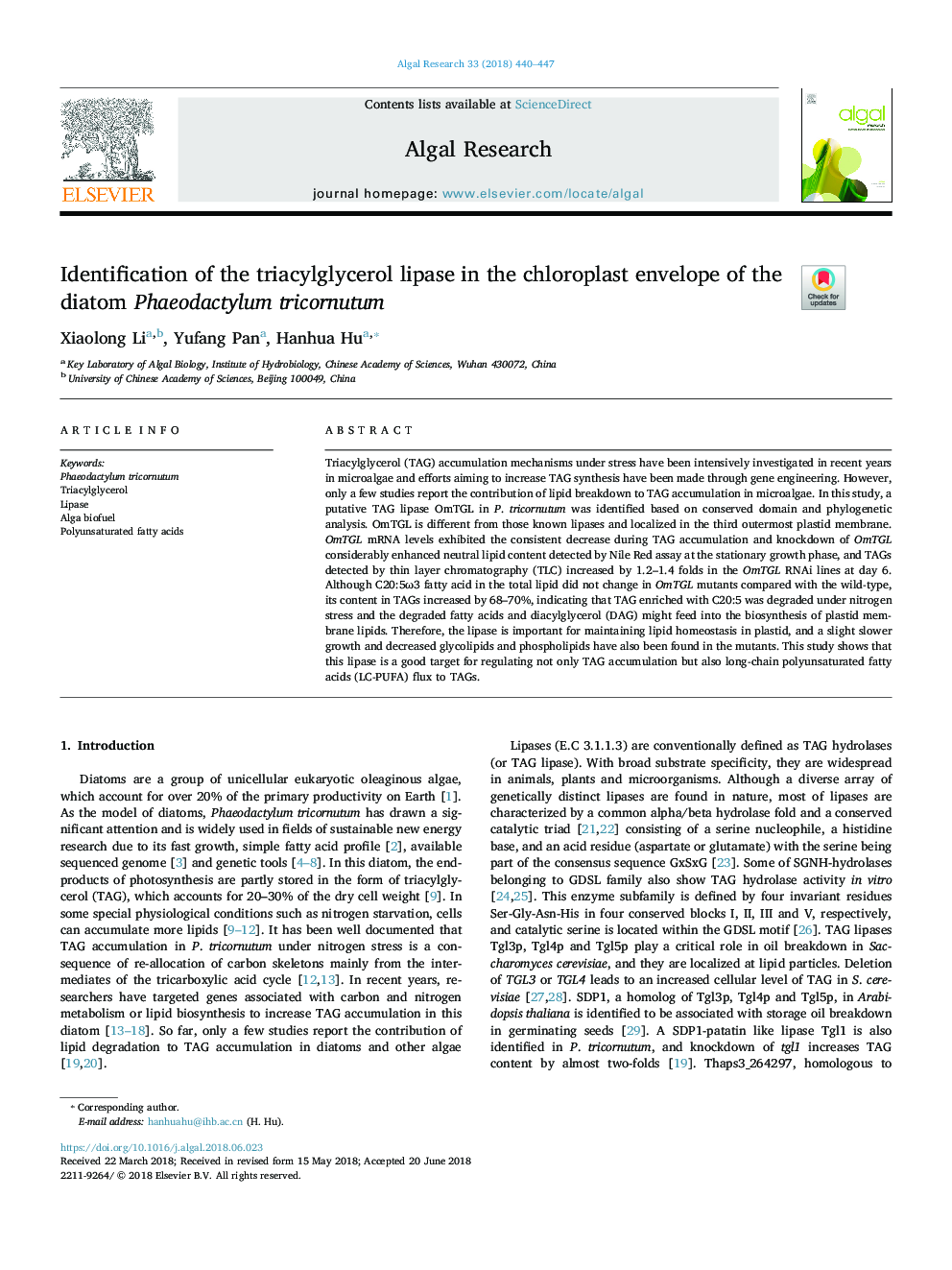| Article ID | Journal | Published Year | Pages | File Type |
|---|---|---|---|---|
| 8085668 | Algal Research | 2018 | 8 Pages |
Abstract
Triacylglycerol (TAG) accumulation mechanisms under stress have been intensively investigated in recent years in microalgae and efforts aiming to increase TAG synthesis have been made through gene engineering. However, only a few studies report the contribution of lipid breakdown to TAG accumulation in microalgae. In this study, a putative TAG lipase OmTGL in P. tricornutum was identified based on conserved domain and phylogenetic analysis. OmTGL is different from those known lipases and localized in the third outermost plastid membrane. OmTGL mRNA levels exhibited the consistent decrease during TAG accumulation and knockdown of OmTGL considerably enhanced neutral lipid content detected by Nile Red assay at the stationary growth phase, and TAGs detected by thin layer chromatography (TLC) increased by 1.2-1.4 folds in the OmTGL RNAi lines at day 6. Although C20:5Ï3 fatty acid in the total lipid did not change in OmTGL mutants compared with the wild-type, its content in TAGs increased by 68-70%, indicating that TAG enriched with C20:5 was degraded under nitrogen stress and the degraded fatty acids and diacylglycerol (DAG) might feed into the biosynthesis of plastid membrane lipids. Therefore, the lipase is important for maintaining lipid homeostasis in plastid, and a slight slower growth and decreased glycolipids and phospholipids have also been found in the mutants. This study shows that this lipase is a good target for regulating not only TAG accumulation but also long-chain polyunsaturated fatty acids (LC-PUFA) flux to TAGs.
Related Topics
Physical Sciences and Engineering
Energy
Renewable Energy, Sustainability and the Environment
Authors
Xiaolong Li, Yufang Pan, Hanhua Hu,
